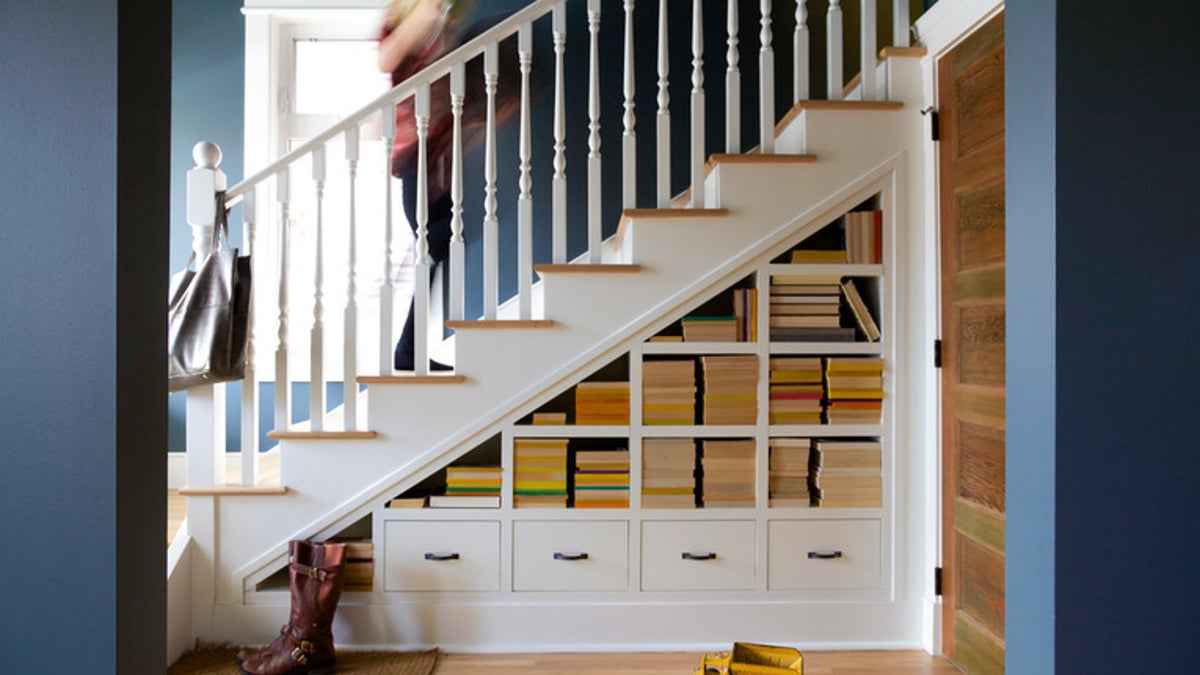
It has happened to the best of us: You’re fed up with the unused exercise machine, broken toaster, outgrown baby clothes or fill-in-the-blank taking up space in your home, so you pick it up and take it to storage. Whether your storage area is in a basement, an attic, a backyard shed or a rented unit, chances are it’s filled with things you do not really want or need. While we’re not going to tackle cleaning out your storage here (a topic for another day), the first step is to stop yourself from creating any more clutter in there. So the next time you want to add something to storage, stop and ask yourself these 10 questions first.
1. Do you need it? This sounds like a simple enough question, but how each of us answers is highly individual. If you are making an effort to cut back on clutter, try to get real about what “need” means to you. Whether you decide to take a strictly minimalist approach or keep a more fluid list of items you need for living as well as those you cherish for emotional reasons, defining what is important to you is the first step in preventing clutter.
2. Do you like it? Just because you’ve been saving the same decorations from year to year doesn’t mean you must keep doing it. Instead of going through the motions, really look at each item you are considering storing and ask yourself whether it still suits your style as much now as it did when you purchased it. Tastes evolve, and you will love your home more if you allow yourself to let go of things that just aren’t doing it for you.
3. Does it work? Don’t let your basement become the place where broken things go to die! It’s so easy to let that happen, telling yourself, “I’ll fix it one of these days.” But most of the time, if you don’t care enough about the item in question to get it fixed ASAP, it’s probably not worth keeping.
RELATED: Store DVDs, CDs, Games and More in a New Media Console
4. Is it clean? Storing clothing and other textile items without having them cleaned first can spell trouble. Moths and other critters are attracted to the dirt on textiles (gross, I know), so your best defense is putting items away only when they are fresh and clean. Tools and outdoor equipment should also be cleaned before storing to avoid deterioration, so scrub your gardening gear and patio furniture before storing it next time, too.
5. Do you already have something like it? This circles back to question 1: If you already have a similar item, do you really need this one? Keeping multiples of certain items can be helpful, but only if you are intentional about it. All too often we keep buying similar things hoping to find the just-right version of it. Choose the best example (or two) and get rid of the rest.
6. Is it yours? It’s amazing how much stuff we can accumulate from others. If you are storing the item in question for a relative or child, consider setting a limit and giving the item back rather than continuing to let it take up valuable space in your home.
7. Do you know who or what you are saving it for? When you start saving things, whether for yourself, your children or grandchildren, making decisions about what to keep can be quite a challenge. Here are a few things to keep in mind:
- The space items take up. A small amount of carefully chosen and properly stored items can be far more meaningful (and welcome) than an attic’s worth of overstuffed, unlabeled boxes. When you have a choice to make about which items to save, if all else is equal, go with the smaller ones.
- Proper labeling. Tucking in a note about where each piece came from or why it is important to you can also help pass along stories to the next generation. And if you are saving articles of clothing or toys for a future child, store items by age and write the age range outside the box.
- Photo books. While a book certainly can’t replace everything, for certain artifacts (for instance, crumbling preschool sculptures), it might be even more special to photograph the items and arrange the photos in a book that also tells the backstory.
8. Is that the right container for the job? Buying containers is best left for last — it’s a lot easier and less expensive to get rid of something you don’t need than buy a container for it. Keeping like items together will make it much easier to find things, so stick with a container that just fits what you need to store; otherwise you will be tempted to fill it up with unrelated items.
RELATED: Murphy Beds: The All-In-One Solution for More Sleep and Storage
9. Is that the best place to store it? Some items, like holiday decorations, have a very clear period of use each year, making it easy to store these things in the deeper recesses of your storage area. The need for other items, like toys and books currently out of rotation in your child’s room, or special project supplies, might happen less predictably, so store things like that in an easier-to-reach spot.
10. Do you know how you will find it when you need it? Storing related boxes together can make retrieving items much easier — holiday boxes together, summer gear together etc. Clearly label each box and bin. And if you have a large storage space, consider making a storage map that shows what is in each storage zone.